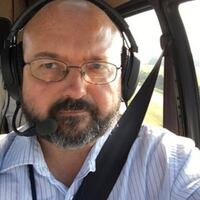“He has done a great job,” Jenkins said of his student. “He really has.”
Founded in 2003, NASA’s “Hunch” program is a nationwide partnership between NASA and high school and middle school students who try to build things NASA can use, often on the International Space Station. More than 3,000 student-designed items from more than 500 classrooms have made their way to the station, NASA says.
Credit: JIM NOELKER
Credit: JIM NOELKER
Review finals in the contest are scheduled for Wednesday at the Space Center in Houston.
Wright’s idea is decidedly moon-focused. The 18-year-old has worked on a wheel for a lunar scooter or vehicle since the start of the school year in Jenkins’ CTC class.
“All year I’ve been working on this; I’ve gone through a lot of prototypes,” Wright said in an interview at Fairmont. “And this is my final design for right now. I don’t have much time to change anything.”
The prototype he showed a Dayton Daily News reporter Monday had a plastic wheel hub. Prototypes aren’t expected to be made of flight materials. A real moon vehicle wheel would likely boast a aluminum hub with spokes made of titanium.
Conditions on the moon are unforgiving, to say the least. NASA needs a wheel that can withstand temperatures down to a minus-208 degrees Fahrenheit and abrasive moon dust. To move on the moon, a metal cover of kevlar would go around the hub, Wright said.
Wright met with NASA representatives in recent weeks, who invited him to the Hunch gathering this week. He’ll rub elbows with fellow students from across the nation with their own ideas and prototypes.
“I’m just hoping it all goes well,” Wright said. “I’m not really sure what to expect.”
Jenkins said NASA wants prototypes displaying innovation, devices that honor NASA requirements and specifications — in this case, a wheel no bigger than 18 inches in diameter with a half-inch axle. He expects Wright to be asked questions about how the wheel might withstand stresses and be manufactured.
“This is all his idea, all of it,” Jenkins said. “This is all from him goofing around on Solid Works (a software design program) and taking chances and banging his head on the wall. He had a lot of failures and a lot of successes, and this is really all that coming together. He put a lot of hours into it.”
Wright said he hopes to attend Sinclair Community College for two years before transferring to Ohio State University to study engineering.
About the Author


